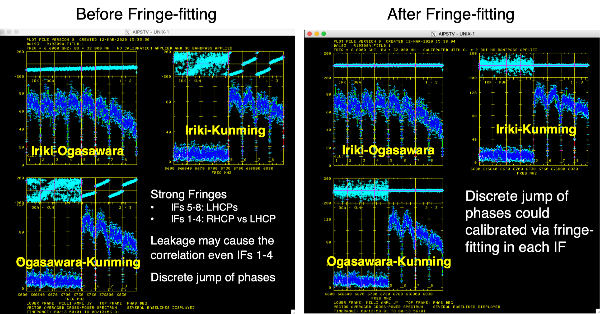Very long baseline interferometry (VLBI) is a kind of technology that uses multiple telescopes to observe distant objects at the same time, enabling scientists to observe extremely tiny objects. The success of the fringe test means that the telescopes participating in the test can form a VLBI array for observation, which is the key to the success of the VLBI observation.
The Yunnan Observatories (YNAO)’ 40-meter radio telescope participated in the fringe test observation organized by East-Asian VLBI Network (EAVN) on November 5, 2019. Besides the 40-meter radio telescope of YNAO, the stations participating in this observation included the Iriki 20-meter and Ogasawara 20-meter telescopes in Japan. The frequency band was C-band, and the target were W3OH Masers and 3C84, DA193 continuous spectrum. The total observation time was about 1 hour.
According to EAVN data processing arrangements, the results has released in late March 2020. In this observation, 40-meter radio telescope of YNAO and other two stations have clear fringes and extremely high signal-to-noise ratio, which is highly praised by Japanese colleagues.
With the active consultation and unremitting efforts of the Radio Astronomy and the VLBI Group of the YNAO and the EAVN organization, they organized this fringe test observation. The success of this observation indicates that the 40-meter radio telescope of YNAO has the ability to participate in EAVN network. The 40-meter radio telescope of YNAO will also participate in more EAVN observations in the future.

Figure 1: Fringes of the observation; according to EAVN requirements, the Yunnan Observatories’ 40-meter telescope sets IF 1-4 to RCP and 5-8 to LCP; all IFs of the two Japanese stations are LCP.(Image by K. Sugiyama)
contact:
CHEN Wen, YNAO, CAS
chenwen@ynao.ac.cn